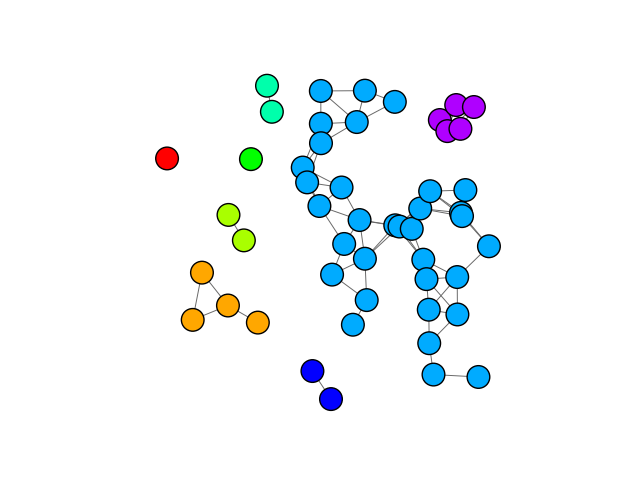Note
Click here to download the full example code
Connected Components
This example demonstrates how to visualise the connected components in a graph using igraph.GraphBase.connected_components().
import igraph as ig
import matplotlib.pyplot as plt
import random
First, we generate a randomized geometric graph with random vertex sizes. The seed is set to the example is reproducible in our manual: you don’t really need it to understand the concepts.
random.seed(0)
g = ig.Graph.GRG(50, 0.15)
Now we can cluster the graph into weakly connected components, i.e. subgraphs that have no edges connecting them to one another:
components = g.connected_components(mode='weak')
Finally, we can visualize the distinct connected components of the graph:
fig, ax = plt.subplots()
ig.plot(
components,
target=ax,
palette=ig.RainbowPalette(),
vertex_size=0.07,
vertex_color=list(map(int, ig.rescale(components.membership, (0, 200), clamp=True))),
edge_width=0.7
)
plt.show()

Note
We use the integers from 0 to 200 instead of 0 to 255 in our vertex
colors, since 255 in the igraph.drawing.colors.RainbowPalette
corresponds to looping back to red. This gives us nicely distinct hues.
Total running time of the script: ( 0 minutes 0.315 seconds)